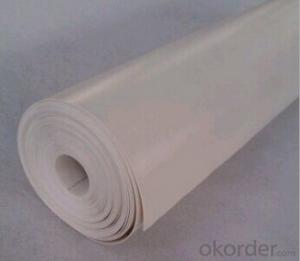PVC Waterproof Membrane No Craze No Bubble
- Loading Port:
- Tianjin
- Payment Terms:
- TT OR LC
- Min Order Qty:
- 2000 m²
- Supply Capability:
- 10000 m²/month
OKorder Service Pledge
OKorder Financial Service
You Might Also Like
Product description
Polyvinyl chloride PVC waterproof membrane is a kind of excellent performance of polymer waterproof material,PVC resin as the main raw material,add all kinds of special additive and anti-aging composition,the use of advanced equipment and advanced technology extrusion rolling is made.The product has the tensile strength and elongation high shrinkage of small,low temperature soft good,long life and other advantages, the products wide 1.2m to 3.0m, the thickness of 0.8-2.0 mm(special specifications can be customized),stable performance,reliable quality,construction is convenient.
Application Scope
The products are widely used in all kinds of civil construction,subway,tunnel,water conservancy,landfill site,chemical industry,metallurgy and other areas of waterproof seepage control,corrosion engineering
Features:
Excellent anti-aging property.
Puncture- resistant.
Welding construction,
High tensile strength, good elongation, good dimensional stability.
Good plasticity.
It has self-extinguishing from fire property.
Materials surface is smooth, fast color, stain resistance.
More wide, Wastage become less when being used.
Type:
N1—Exposed PVC waterproof membrane.
(It is mainly used as details treatment for exposed roof waterproof project)
N2—Non-exposed PVC waterproof membrane.
(It is mainly used as details treatment for non-exposed roof waterproof project)
L1—Exposed PVC waterproof membrane with fabric
(It is mainly used for exposed roof waterproof project)
L2—Non-exposed PVC waterproof membrane with fabric.
(It is mainly used for non-exposed roof waterproof project)
W1—Exposed reinforced PVC waterproof membrane .
(It is mainly used for steel structure roof exposed waterproof project)
W2—Exposed reinforced PVC waterproof membrane .
(It is mainly used for steel structure roof non-exposed waterproof project)
Advantages

Technical Parameters
No. | Item | Index | |||||
| 1 | Thickness of resin layer of the middle fabric ,mm≥ | - | - | 0.40 | 0.40 | 0.40 | |
| 2 | Tensile performance | Max tensile strength,N/cm ≥ | - | 120 | 250 | - | 120 |
| Tensile strength,NPa ≥ | 10 | - | -10 | - | - | ||
| Max elongation% ≥ | - | - | 15 | - | - | ||
| Breaking elongation % ≥ | 200 | 150 | - | 200 | 100 | ||
| 3 | Heat treatment size change rate%≤ | 2.0 | 1.0 | 0.5 | 0.1 | 0.1 | |
| 4 | Cold bonding | -25°c No cracks | |||||
| 5 | Watertightness | 0.3mPa,2h waterproof | |||||
Packaging & Shipping

product show

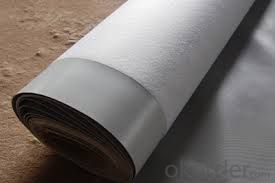
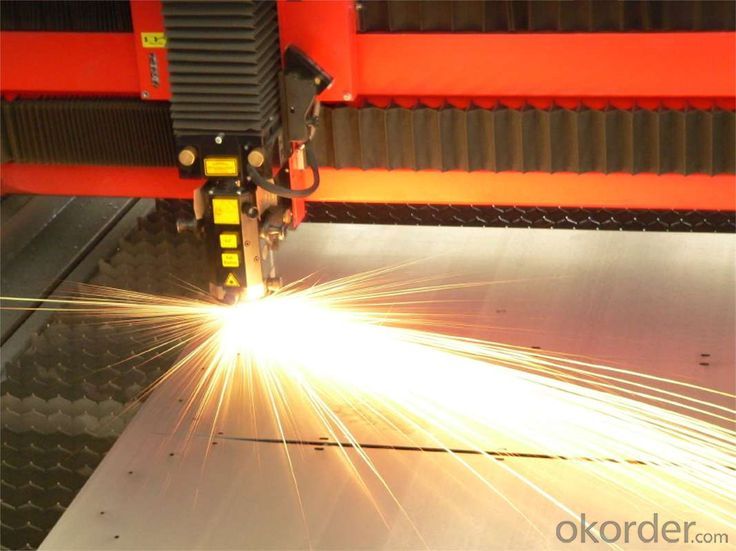
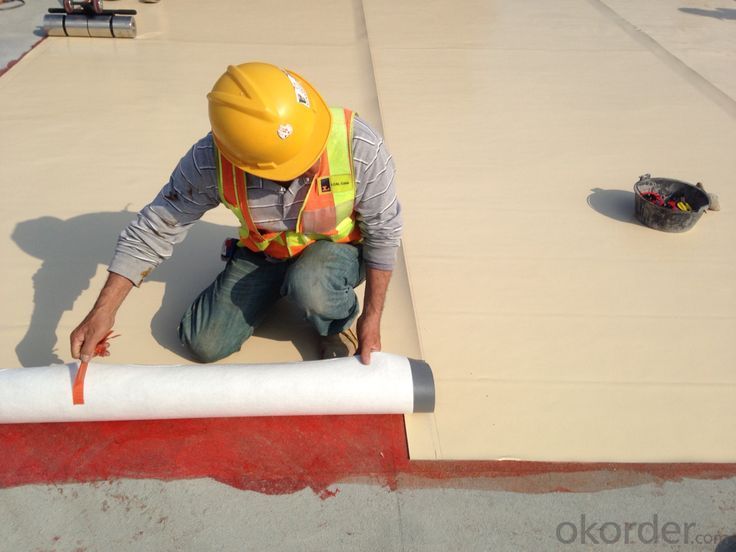

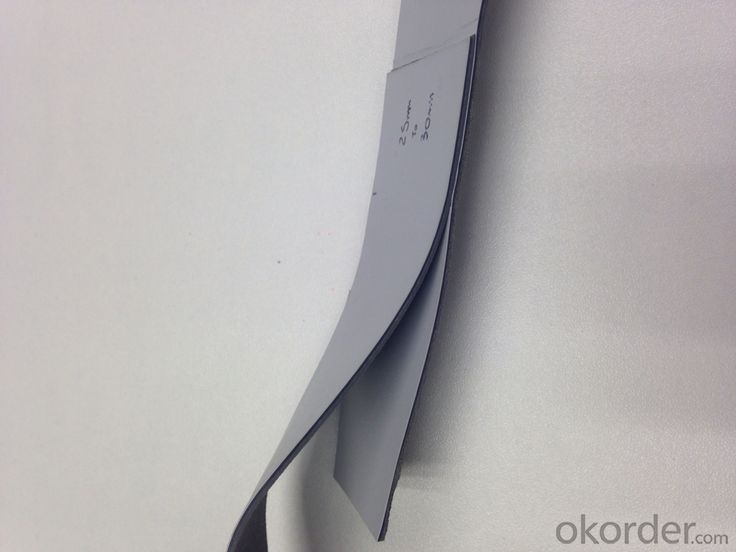

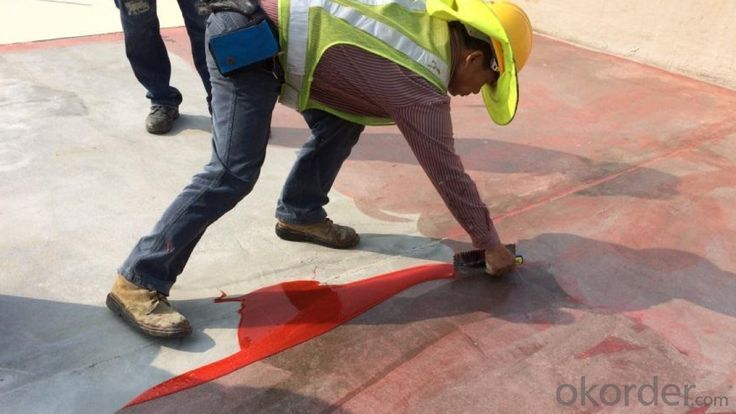
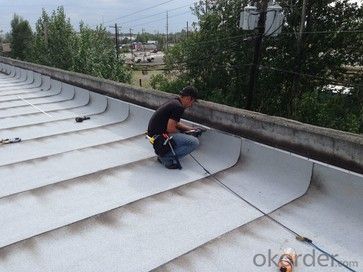
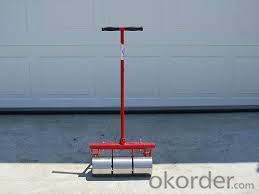
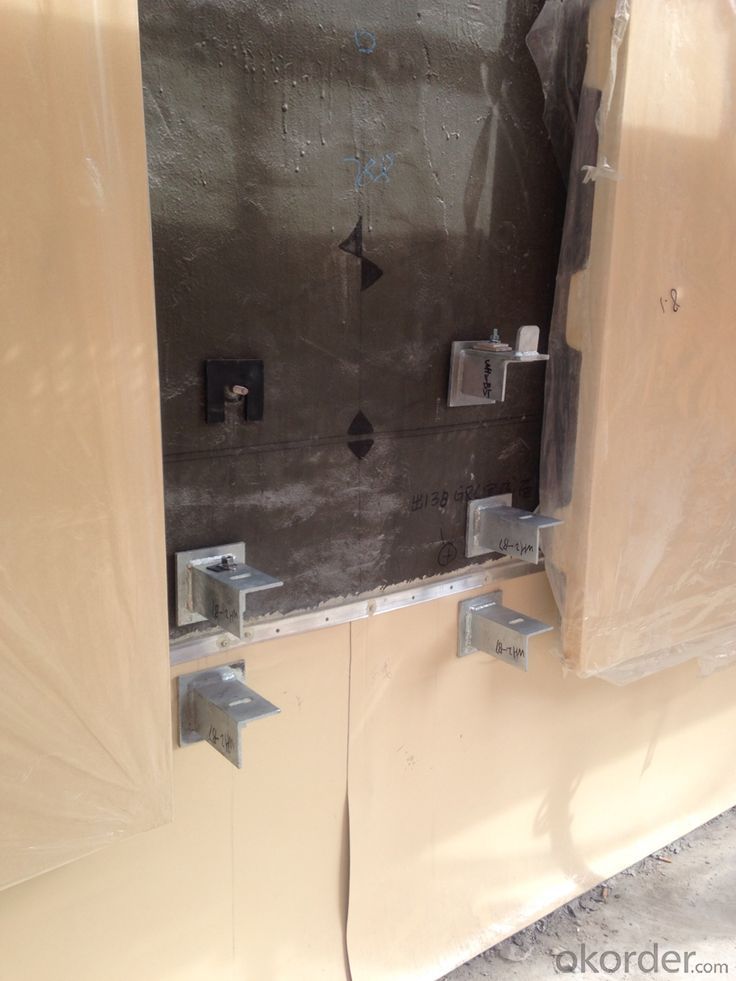
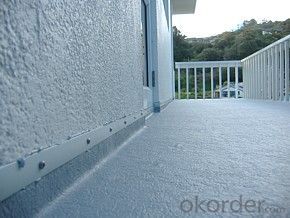
FAQ
Q: What's the delivery time ?
A: 3-5 days for 1-600 rolls, 10-15 days for container.
Q: What's the payment terms ?
A: TT/LC
Q: How do you make replacement with quality problems ?
A: New replacement will be packed into your next order or send to you directly after receive video or photo about quality problems.
- Q:Can waterproofing membranes be used on outdoor patios?
- Yes, waterproofing membranes can be used on outdoor patios. They are an effective way to protect the patio from water damage and can help to prevent leaks and moisture penetration. Waterproofing membranes create a barrier between the patio surface and water, keeping it dry and extending its lifespan.
- Q:Can a waterproofing membrane be used in balconies or decks?
- Yes, a waterproofing membrane can be used in balconies or decks to protect the underlying structure from water damage and ensure a longer lifespan for the outdoor space.
- Q:Can a waterproofing membrane be used in boat decks or marinas?
- Yes, a waterproofing membrane can be used in boat decks or marinas. Boat decks and marinas are constantly exposed to water, making them prone to damage and deterioration over time. A waterproofing membrane can provide an effective solution to protect these surfaces from water intrusion, preventing issues such as rotting, warping, and mold growth. The membrane acts as a barrier, preventing water from seeping into the underlying structure and causing damage. It also helps to maintain the structural integrity of the boat deck or marina, prolonging its lifespan. Additionally, a waterproofing membrane can enhance the safety of these surfaces by reducing the risk of slip and fall accidents, as it can provide a slip-resistant surface. Overall, using a waterproofing membrane in boat decks or marinas is a wise choice to ensure their durability, longevity, and safety.
- Q:Sbs waterproofing membrane can make bathroom waterproof?
- And can be used in the basement, bridges, parking lots, swimming pools, tunnels and other buildings waterproof, moisture, steam, impermeable and various types of roof maintenance works, and the service life is very long, basically not bad,
- Q:Can a waterproofing membrane be used for a basement?
- Yes, a waterproofing membrane can be used for a basement. Waterproofing membranes are designed to prevent water infiltration and can effectively protect basements from moisture and potential water damage. They are typically applied to the exterior or interior walls and floors of basements to create a barrier against water seepage. This helps to keep the basement dry and protect against issues such as mold, mildew, and structural damage.
- Q:Can a waterproofing membrane be used for warehouses or storage facilities?
- Yes, a waterproofing membrane can be used for warehouses or storage facilities. It provides an effective barrier against water penetration, helping to protect the building and its contents from moisture damage.
- Q:Can a waterproofing membrane be used for a bridge deck construction?
- Bridge deck construction can utilize a waterproofing membrane. This membrane is a thin material layer applied to the bridge deck to prevent water infiltration and safeguard the underlying structure against corrosion and deterioration. To ensure the bridge's longevity and durability, it is commonly employed in bridge deck construction. The waterproofing membrane functions as a moisture barrier, effectively stopping water and other liquids from penetrating the surface of the bridge deck. This is especially vital for bridge decks as they are constantly exposed to various weather conditions, including rain, snow, and ice, which can cause gradual harm. Apart from its water resistance properties, the waterproofing membrane also provides protection against other elements like UV rays and chemicals that can deteriorate the bridge deck surface. By obstructing water and other detrimental substances from reaching the bridge deck, the membrane aids in extending the bridge's lifespan while reducing maintenance and repair expenses. Moreover, the waterproofing membrane contributes to the overall safety of the bridge by minimizing the risk of structural damage caused by water infiltration. By keeping the bridge deck dry, it helps preserve the bridge's integrity and prevents potential hazards such as slippery surfaces or weakened structural components. In conclusion, the waterproofing membrane is an essential element in bridge deck construction as it guarantees the long-term functionality and durability of the bridge. Its ability to protect against water infiltration, UV rays, and chemicals makes it an ideal choice for enhancing the performance and lifespan of a bridge.
- Q:How does a waterproofing membrane perform in areas with chemical exposure or solvents?
- Waterproofing membranes are not specifically designed to resist chemical exposure or solvents. Although they may offer some resistance to certain chemicals, extended exposure to aggressive chemicals can compromise their effectiveness. These chemicals can degrade the membrane material over time, making it brittle, cracked, or ineffective at waterproofing. To improve the performance of a waterproofing membrane in areas with chemical exposure or solvents, it is advisable to use a specialized chemical-resistant membrane. These membranes are made from tested materials that can withstand various chemicals and solvents. They provide a higher level of protection and durability, ensuring long-lasting performance and preventing damage caused by chemical exposure. It is important to choose the appropriate waterproofing membrane based on the specific chemicals and their concentrations present. Seeking guidance from a professional waterproofing contractor or manufacturer can help in selecting the most suitable membrane for the intended application. Regular inspection and maintenance are crucial to monitor the performance of a waterproofing membrane in areas with chemical exposure. Promptly addressing any signs of deterioration, such as cracks, leaks, or discoloration, can prevent further damage and potential water infiltration. Overall, while a waterproofing membrane can offer some protection in areas with chemical exposure or solvents, it is preferable to use a specialized chemical-resistant membrane for superior long-term performance and durability.
- Q:Can a waterproofing membrane be used in areas with extreme weather conditions, such as hurricanes or snowstorms?
- Areas with extreme weather conditions, such as hurricanes or snowstorms, can benefit from the use of a waterproofing membrane. These membranes are designed to create a protective barrier against water infiltration and can withstand various weather conditions effectively. They are made from moisture-resistant materials and can be installed in roofs, basements, or foundations. In regions prone to hurricanes, waterproofing membranes play a crucial role in preventing water damage. They create a barrier that keeps water out, even during heavy rainfall or storm surges. These membranes are often reinforced and possess high tensile strength to withstand the strong winds and pressure associated with hurricanes. Similarly, in areas experiencing heavy snowstorms, waterproofing membranes are valuable in preventing water intrusion caused by melting snow or ice dams. They are designed to be flexible and resistant to extreme temperatures, ensuring their integrity and leak prevention in freezing conditions. However, it is essential to select the appropriate type of waterproofing membrane for the specific weather conditions in the area. Different membranes offer varying levels of resistance to extreme weather, so consulting with a professional is advisable to determine the most suitable membrane for the climate and weather patterns. Additionally, proper installation and regular maintenance are crucial to ensure the longevity and effectiveness of the waterproofing system in extreme weather conditions.
- Q:How does a waterproofing membrane handle water migration through the substrate?
- A waterproofing membrane is designed to prevent water migration through the substrate. It acts as a barrier, preventing water from infiltrating the substrate and causing damage to the structure. The membrane is typically applied to the exterior side of the substrate, creating a watertight seal. To handle water migration, the membrane is typically made from a flexible and durable material such as modified bitumen, PVC, or EPDM. These materials have excellent waterproofing properties and can withstand exposure to water, UV rays, and other environmental factors. The membrane is installed in a way that ensures proper adhesion to the substrate, creating a seamless and continuous barrier. It is often applied in multiple layers to further enhance its effectiveness. The seams and joints are also properly sealed to prevent any potential water leaks. In addition to its primary waterproofing function, the membrane also helps to manage water that may accumulate on the surface. It is designed with a slope or drainage system, directing water away from critical areas and towards appropriate outlets or drains. Overall, a waterproofing membrane is specifically engineered to handle water migration through the substrate by creating a reliable and long-lasting barrier against moisture. It is an essential component in protecting structures from water damage and ensuring their durability and longevity.
1. Manufacturer Overview |
|
|---|---|
| Location | |
| Year Established | |
| Annual Output Value | |
| Main Markets | |
| Company Certifications | |
2. Manufacturer Certificates |
|
|---|---|
| a) Certification Name | |
| Range | |
| Reference | |
| Validity Period | |
3. Manufacturer Capability |
|
|---|---|
| a)Trade Capacity | |
| Nearest Port | |
| Export Percentage | |
| No.of Employees in Trade Department | |
| Language Spoken: | |
| b)Factory Information | |
| Factory Size: | |
| No. of Production Lines | |
| Contract Manufacturing | |
| Product Price Range | |
Send your message to us
PVC Waterproof Membrane No Craze No Bubble
- Loading Port:
- Tianjin
- Payment Terms:
- TT OR LC
- Min Order Qty:
- 2000 m²
- Supply Capability:
- 10000 m²/month
OKorder Service Pledge
OKorder Financial Service
Similar products
New products
Hot products
Related keywords
